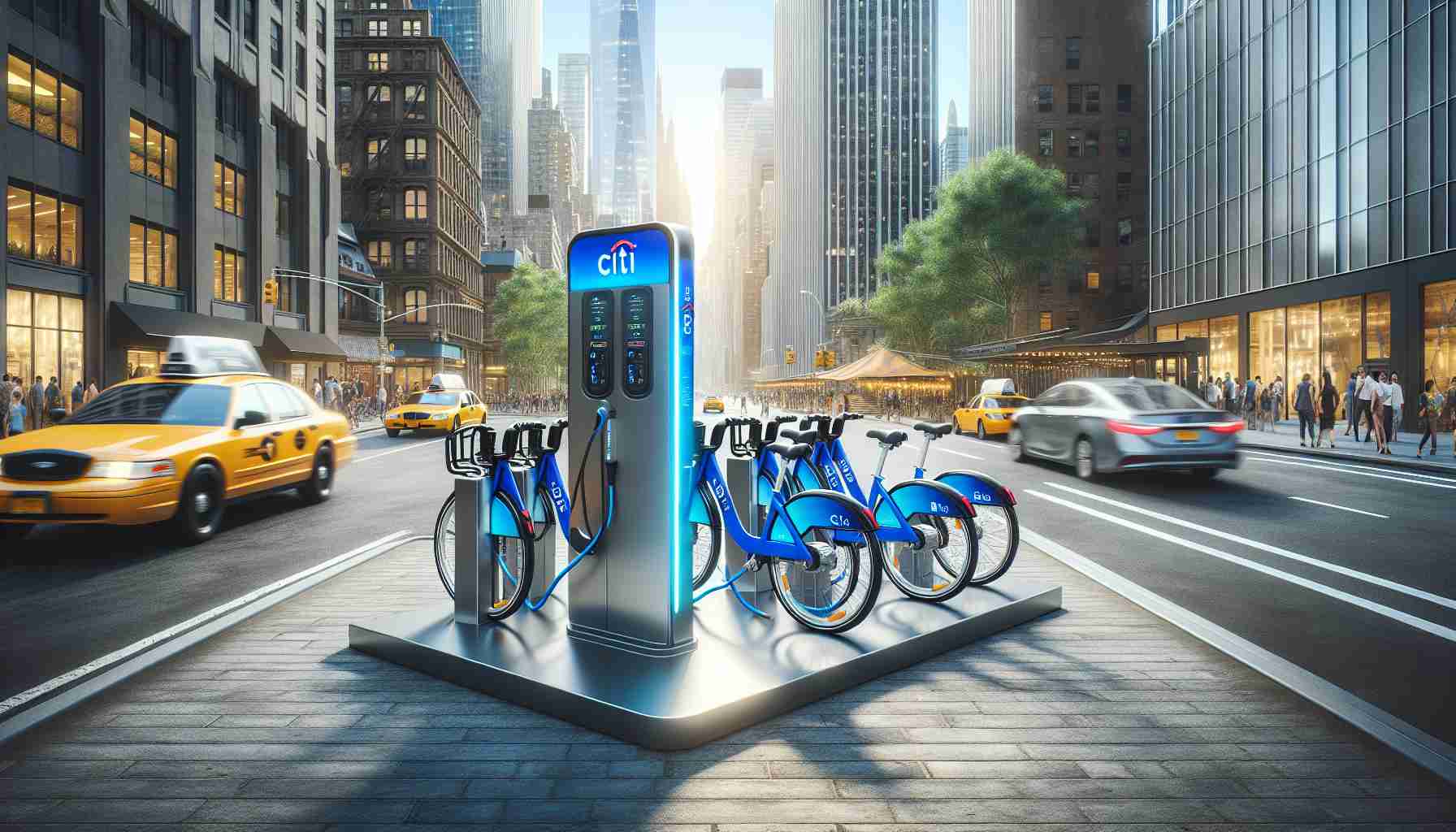New York City officials have recently revealed the first two Citi Bike charging stations that are capable of recharging e-bike batteries. These cutting-edge stations will be connected to the power grid, providing a convenient and efficient way to recharge the bikes. However, there is still ongoing work to establish a permitting process for bringing electricity to the roadbed, indicating that some adjustments are yet to be made.
The new electrification effort includes three docking stations situated on the sidewalk at West 35th Street and Ninth Avenue in Manhattan, while a fully electrified station can be found at Meserole and Manhattan avenues in Greenpoint. The Department of Transportation (DOT) and Citi Bike operator Lyft plan to expand this initiative to approximately 20 percent of the 2,200 stations in the system. However, neither party has disclosed a specific timeline or outlined the necessary funding required to achieve this goal.
The current charging infrastructure operates similarly to the city’s electric car charging stations, with e-bike chargers connecting to the electrical grid from the sidewalk. In the future, Lyft intends to connect the power sources on the sidewalk to the docks located in the street, ensuring more efficient recharging capabilities.
By incorporating electrified docks, e-bikes will be able to recharge while stationary, significantly reducing the need for manual battery swaps by Citi Bike employees. This endeavor aims to minimize the operational efforts associated with maintaining a large fleet of e-bikes. Lyft estimates that electrifying one-fifth of the stations, with particular emphasis on those with heavy usage, could reduce manual battery swaps by up to 90 percent.
Lyft spokesperson Jordan Levine explains how this new initiative can benefit riders, stating, “If an e-bike is getting ridden 10 times a day, it’s very likely to pass through one of those stations that’s charged … so then we can lock it at that station once it gets up to a certain level, and then release it back out there.” This allows the bikes to have enough charge to last through the day, with limited battery swapping being carried out overnight.
While the initial electrification effort has been funded by Lyft, officials are seeking federal funding for a larger expansion, which is currently in the planning stages. Since the announcement of plans to electrify Citi Bike stations back in 2021, the fleet has expanded significantly, and the service has become the largest “station-based” electric bike-share provider globally. With approximately seven million e-Citi Bike rides already taken this year by New Yorkers, the demand for electric bike options continues to grow.
Moving forward, the DOT plans to install 10,000 additional curbside charging ports for cars, effectively reclaiming portions of public street space adjacent to the chargers. In order to optimize infrastructure usage, some Manhattan pedestrian advocates, such as Christine Berthet, have suggested exploring alternatives to sidewalk-based charging stations. Berthet proposes the expansion of sidewalks with concrete to accommodate charging infrastructure in the roadbed, thus alleviating concerns about occupying precious sidewalk space.
As this electrification initiative progresses, DOT Bike Share and Shared Mobility Executive Director John Frost remains optimistic about the future of electric Citi Bike docks. He envisions a combination of sidewalk and roadbed locations for the charging stations, noting that adjustments will be made based on experience and feedback to ensure a seamless integration of the infrastructure.
The electrification of Citi Bike charging stations in New York City is part of a larger initiative to provide efficient and convenient recharging capabilities for e-bike batteries. With the new electrified stations connected to the power grid, riders will be able to recharge their e-bikes while stationary, reducing the need for manual battery swaps by Citi Bike employees.
The Department of Transportation (DOT) and Citi Bike operator Lyft plan to expand this initiative to approximately 20 percent of the 2,200 stations in the system. While a specific timeline and funding details have not been disclosed, the expansion aims to target stations with heavy usage to maximize the impact of electrification.
By electrifying the docking stations, Citi Bike estimates that manual battery swaps could be reduced by up to 90 percent for the selected stations. This not only streamlines operations but also ensures that e-bikes have enough charge to last through the day, minimizing the need for overnight battery swapping.
Lyft spokesperson Jordan Levine highlights the benefits for riders, explaining how e-bikes passing through the electrified stations can be locked and charged, providing sufficient charge for the next rider. This system optimizes the availability of charged e-bikes throughout the day.
The initial electrification effort has been funded by Lyft, but officials are seeking federal funding for a larger expansion. With the growing demand for electric bike options, the expansion of electrified Citi Bike stations is crucial to meet the needs of New Yorkers. Since the announcement of plans to electrify the stations in 2021, the fleet has expanded significantly, making Citi Bike the largest “station-based” electric bike-share provider globally.
In addition to the electrification of Citi Bike stations, the DOT also plans to install 10,000 curbside charging ports for cars. This move aims to optimize infrastructure usage by reclaiming portions of public street space adjacent to the chargers. However, some pedestrian advocates, such as Christine Berthet, suggest exploring alternatives to sidewalk-based charging stations. Berthet proposes expanding sidewalks with concrete to accommodate charging infrastructure in the roadbed, addressing concerns about occupying valuable sidewalk space.
As the electrification initiative progresses, John Frost, the DOT Bike Share and Shared Mobility Executive Director, remains optimistic about the future of electric Citi Bike docks. He envisions a combination of sidewalk and roadbed locations for the charging stations, taking into account feedback and experience to ensure a seamless integration of the infrastructure.
Overall, the electrification of Citi Bike charging stations in New York City is set to revolutionize the e-bike sharing system, providing a more efficient and sustainable mode of transportation for New Yorkers. With ongoing efforts to expand the electrification initiative, the future looks promising for electric bike options in the city.
Related links:
– Citi Bike
– Lyft
– Curbed







